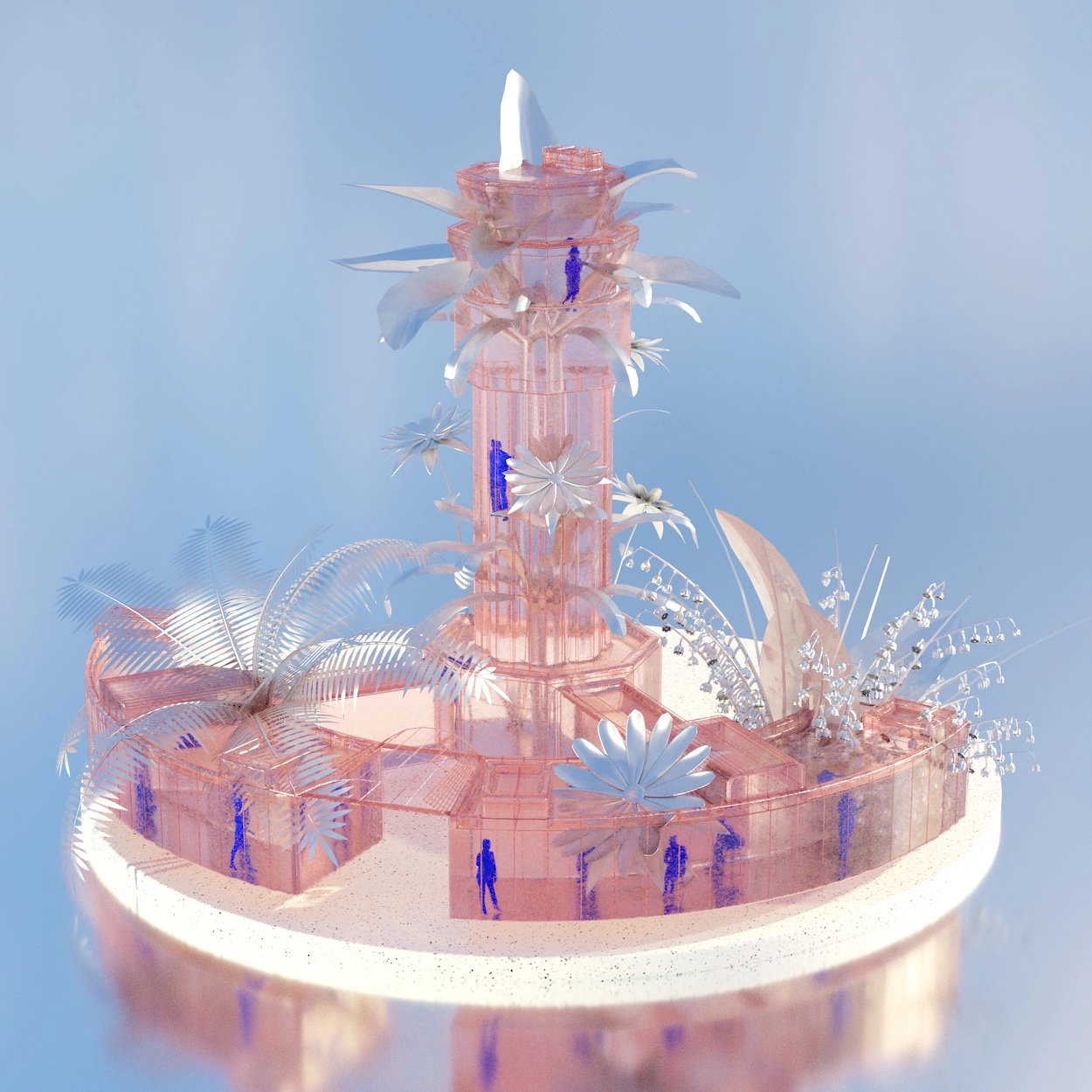The Design Dispatch offers expertly written and essential news from the design world crafted by our dedicated team. Think of it as your cheat sheet for the day in design delivered to your inbox before you’ve had your coffee. Subscribe now.
Have a news story our readers need to see? Submit it here
“Conceived by international content platform Depositphotos, The Revival Project is an initiative consisting of 38 unique charitable NFTs by seven independent Ukrainian creatives. Each one depicts an interpretation of a cultural site in Ukraine in the future—from museums and cultural centers to railway stations—with the artists interweaving “their own experiences, memories and fantasies” in the process. Among the sites reconstructed, over 20 have been destroyed in the war. The Revival Project hopes to not only showcase the exceptional cultural value of these sites but to raise funds for contributing to their recovery, transferred directly to the crypto wallet of the Ministry of Culture and Information Policy of Ukraine.” [H/T It’s Nice That]
“Designed by JCFO for the Partnership for the Presidio, Tunnel Tops is the long-term vision of the late Michael Painter, founder of landscape architecture firm MPA Design: a series of parks along and on top of tunnels built over a regraded section of Highway 101, known as Presidio Parkway, which runs along the northern edge of a historic former army base. The number of women in leadership roles on Tunnel Tops, especially in construction-related positions, is uncommon. A theme persisted in conversations about the project: The managers are excellent communicators and support collaboration across the team. Are women inherently better at this? There are mixed opinions about this idea among the women involved; behind the excellent communication skills demonstrated by the team is the amount of experience and expertise each manager brings with her.” [H/T Landscape Architecture]
“Record monsoon rains, in part due to melting glaciers in Pakistan’s northern mountains, have brought devastating floods that have covered over a third of the country’s surface. According to BBC and UN estimates, around 33 million Pakistani—one in seven people—have been affected by the floods, as more than 500,000 houses have been destroyed or severely damaged. The Sindh province is the hardest hit, receiving 464 percent more rain than the 30-year average. The Heritage Foundation Pakistan, led by Yasmeen Lari, Pakistan’s first woman architect, has designed easy-to-build shelters for displaced people. The community is directly involved in building the shelters using local materials like bamboo and reed. The organization is also helping create trenches for rainwater collection and diversion in flooded areas.” [H/T ArchDaily]
“A devastating fire in June 2021 at Donald Judd’s Architecture Office in Marfa, which was undergoing an extensive renovation project, will be reconstructed, according to the nonprofit Judd Foundation. The news was shared on Instagram by the New York organization, which is dedicated to preserving the legacy and work of the late American artist. Since the fire, Judd Foundation has continued working with SCHAUM/SHIEH, an architecture studio with offices in Houston and New York City, and structural engineers Silman, who were restoring the 5,000-square-foot brick building at the time of the fire.” [H/T The Architect’s Newspaper]
“John K. Rauch, who died on August 16 at 91, was one of the unsung heroes of postwar American architecture. As the managing partner of Venturi & Rauch (later Venturi, Rauch & Scott Brown) from its founding in 1964 until the late 1980s, Rauch played an integral but often-unacknowledged role in the design and realization of such landmark buildings as Guild House (1964) and the Institute for Scientific Information Headquarters in Philadelphia (1979), and the Trubek and Wislocki Houses (1971) on Nantucket. Working closely with the late Robert Venturi and later with Denise Scott Brown, Rauch helped effect a watershed change away from the heroic acrobatics of late modernism toward a rich architecture laden with historical references—postmodernism, as it came to be called.” [H/T Architectural Record]
“Dave the Potter inscribed the word “concatenation” and the date, 12th June 1834, in elegant cursive writing onto the earliest known clay pot he molded. “Concatenation” means things linked together to create an effect, and Dave, an enslaved artisan, etched it into this monumental storage jar around the time that South Carolina passed an anti-literacy law directed at slaves. “Is he responding to these strict laws that are passing?” asks Adrienne Spinozzi, the co-curator of the traveling exhibition “Hear Me Now: The Black Potters of Old Edgefield, South Carolina,” which opens at New York’s Metropolitan Museum of Art this month. “Hear Me Now” will include vessels with faces, which had spiritual value likely related to African traditions. The show will also include works by artists such as Simone Leigh, Theaster Gates, and Woody De Othello, who have responded directly to the Edgefield potters.” [H/T The Art Newspaper]
Scientists are making hydrogen using only electricity and moisture in the air.
Foodmasku, a viral artist who makes masks out of food, is having a moment.
The $70,000 swag bag for this year’s Emmy nominees includes NFT artwork.
The TikTok-favorite “Corn Kid” just became South Dakota’s corn ambassador.
Next Article
Our daily look at the world through the lens of design.
Our daily look at the world through the lens of design.
Our daily look at the world through the lens of design.
Record inflation, supply chain woes, and shifting consumer priorities have thrown a wrench in the…
Our daily look at the world through the lens of design.
Author
Administraroot

